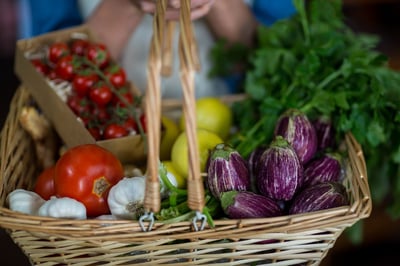Federal regulators have dished out plenty of lemons over the years, burdening trucking companies with time-consuming and expensive regulations. With the Sanitary Transportation of Human and Animal Food (STF) rule taking effect last month, carriers have yet another opportunity to merely comply with the regulations or to make lemonade.
Carriers who see opportunity in the new rule will leverage their food safety data to provide shippers with value-added service. By aggregating and sharing data about the status and location of each trailer load of food products, carriers can help food retailers and restaurants market their products as fresh, fresher or freshest—or whatever superlative they choose.

According to Brian Larwig, General Manager and Vice President for Optimization at TMW Systems, this is where carriers able to squeeze more from their transportation management data will gain an advantage by providing shippers with new and more valuable services.
“Fleets that use food transportation data as a selling tool are the ones finding opportunities in these sorts of federal regulations,” Larwig said.
The right trucking software can summarize a fleet’s service track record—on-time deliveries, temperature compliance overall and temperature compliance for specific products or categories of products hauled. That functionality will also support carriers’ own efforts to market themselves as leaders in food transportation.
Industry observers say STF turned out to be less restrictive than expected. One school of thought is that the rule applies to more than just the shippers; there is a hand-off responsibility for brokers. With FSMA’s seven foundational rules, STF affects shippers, carriers, brokers and receivers. The other belief is that the rule squarely puts responsibility for the safe transportation of food with shippers. But it does not prescribe methods, systems or routines to be used or followed by shippers or carriers. Those details and processes must be developed by shippers and executed by carriers.
Shippers create a written agreement with carriers detailing a number of items, including:
- Trailer temperatures based on type of food
- Trailer sanitation
- Types of packaging permissible in previous loads
- Training for drivers and others involved in food transportation
While STF actually took a number of years to be created and approved, the new rule is being implemented at a time when Americans seek fresher ingredients in the foods they buy when cooking at home and the meals they consume when dining out.
Food retailers and restaurants are catering to these desires with efforts dubbed Field to Table, Farm to Table, Farm to Fork and the like. This focus by the food service industry makes shippers receptive to fleets that can show a proven track record of complying with the STF.
National restaurant company Panera Bread sees the opportunity to leverage its transportation system to provide data that help it track shipments in order to provide food that meets customer expectations. According to Andy Correll, Senior National Transportation Manager, “quicker to table is healthier and better for our customers.”
Correll said the St. Louis, MO-based company delivers products to its restaurants seven days a week. “We probably have the freshest produce in the industry.”
“We use all fresh products,” Correll explained, “and we bring them as quickly as possible from field to table. It’s critical to understand temperature tracking, beginning with the field all the way through to our restaurants.”
Fleets equipped with transportation management software can manage the host of variables involved in the supply chain. “The software offers various ways to report data when a load is delivered as well as after the fact.”
At delivery, fleets with a transportation management system that interfaces with on-vehicle communications can provide data on the shipment right from the truck. If there’s no mobile communications interface, the fleet’s office staff can forward it to the receiver.
For information on how TMW software can help your business manage the foodservice supply chain, contact us now. For a deep-dive on the regulations, click here.


